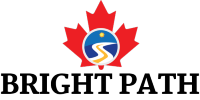With its high salaries, high quality of life, relatively low cost of living, and booming job market, choosing to live and work in Canada is obvious. In addition, there is a vast multitude of Canada jobs for foreigners and very high demand for specific occupations in certain provinces. However, getting a job offer from overseas can be daunting. In these 3 easy steps, we can show you how to get a job offer from Canada.
Step 1: Do Proper Research
Your country can differ in the job market, application processes, in-demand occupations, and even job titles. Therefore, an excellent way to see if you’re able to live and work in Canada is to ask yourself each of the following questions:
Are you building a professional network?
As in any career path, who you know can make a massive difference to your job prospects. Networking can give you even more opportunities to find Canada jobs for foreigners. In addition, there are multiple ways to network within your industry in Canada.
The best way is to network in person. That personal touch often helps build rapport and allows prospective employers to know you and your work. The best way to do this from outside of Canada is to attend international conferences, summits or job fairs to meet other professionals from within your industry.
However, this opportunity is not available to many. So a far more accessible but still highly effective way to network is online. There are thousands of fantastic networking sites that allow you to contact plenty of people from your own home within your industry. This step is an absolute must for people who cannot attend networking events. A few examples of the many networking sites available to you are:
- Integrating Newcomers (construction)
- Active Engagement and Integration Project (write a resumé, get credential accredited, online job fairs, and prepare for work in Canada)
- Global Onboarding of Talent Initiative (GO Talent) (information technology)
- Canada InfoNet ( learn about the workplace and culture in Canada as well as prepare for work in Canada)
- Settlement Online Pre-Arrival (SOPA) (general job strategies and preparing to work in Canada)
- Pre-Arrival Supports and Services Program (PASS) (healthcare, particularly nursing)
- BuildON (construction, skilled trades, engineering)
- ACCESEmployment: Canadian Employment Connections and Entrepreneurship Connections Pre-Arrival (CEC-ECP) (engineering, entrepreneurship, finance, leadership, human resources, sales and marketing, supply chain management)
- Connexions Francophones (French Speaking Newcomers)
Depending on your occupation, another fantastic way to build your network is to utilize the sources provided by the Canadian government. Two great Canadian government portals are Service Canada and the Canadian Job Bank.
Another means of networking is to volunteer your services to Canadian companies. Volunteering can often be a great way to give back to the global community and gain Canadian work experience.
Are Recruiters On Your Side?
To maximize your chances of getting a job in Canada, you must ensure you have a positive image with recruiters. This is because they ultimately decide whether or not you get your job offer.
A great way to ensure you don’t get on recruiters’ wrong side is to be selective about the jobs you apply for. If you only apply for jobs you’re confident you’re sufficiently qualified for, recruiters are far more likely to take you seriously.
Another way to build rapport with recruiters is to be proactive about your job applications. Be sure to follow up on applications if you don’t hear back for a prolonged period. Be sure to thank your recruiter at the end of the process, whether your application is successful.
How is your online reputation?
You must ensure your online reputation is the best it can be. Keep active on sites like LinkedIn to ensure you’re well-received online. Keeping busy will massively increase your chances of getting a job and how seriously recruiters take you.
Make sure your credentials, experience and qualifications are up to date.
Step 2: Choose Your Dream Destination
A hugely important aspect of how to get a job offer in Canada is making sure you pick the proper province for your occupation. As mentioned before, one of the major deciding factors on getting a job and getting your visa allowing you to live and work in Canada is the province in which you choose to work. So the first thing is looking at where your job may be in demand. Having a high-demand occupation in Canada can massively improve your chances of landing work in Canada and getting a worker’s permit or permanent residency in Canada. As it currently stands, the Canada jobs for foreigners most in-demand are as follows:
- IT and Support Desk Specialists;
- Administrative Assistants;
- Cyber Security Specialists;
- Web Developers;
- Mobile Application Developers;
- Big Data Scientists and Data Analysts;
- Digital Marketing Specialists;
- Logistics/Transportation Managers;
- Early Education Workers; and
- Health Care Support Workers for Seniors.
That said, in-demand occupations differ from province to province, depending on the prevalent industries and gaps in the labour market.
Once you’ve found which province may need you the most, the following way to get a job offer from Canada is to do your networking.
This map can give you a good idea of where your job may be in demand.QuebecNova ScotiaSaskatchewanAlbertaNewfoundland and LabradorBritish ColumbiaNew BrunswickPrince EdwardIslandYukonManitobaOntarioNunavutNorthwest Territories+−
A second major factor to consider is where the best job market is. If your job isn’t in demand, looking to move to a thriving job market and growing industries is your best bet. Of course, the obvious choices are Toronto, Montreal, and Vancouver. Many smaller cities have more job vacancies, depending on the industry.
Many smaller cities also have immigration pilot programs for specific industries, which is essential in our next step. For example, programs like the Rural and Northern Immigration Pilot (RINP), Atlantic Immigration Pilot Program (AIPP) and the Agri-Food Pilot (AFP) seek to actively present skilled migrants within specific industries by fast-tracking their visa application process.
Step 3: Localize and Send Off Your Resumé
Your resumé is the primary way you will present yourself to potential employers. Therefore, your information must be clear, up to date and verifiable. A significant way to make sure your resumé will have maximum engagement with potential employers is to structure your resumé as follows.
First, present your contact information. Your name and contact details like phone number, email and residential address should be the first information your potential employer sees. Ensure you have a professional-sounding email address and an easily accessible phone number. In Canada, your date of birth, gender, marital status or parents’ names are not required for your resumé.
Second, you should include a professional career summary of 4 to 5 short sentences that describe your latest job, experience and vision for the future.
Third, you must include your work experience. You should name the companies you’ve worked for in the past, your respective job titles, duration of employment and key responsibilities in each job. We recommend you add around 4 to 5 duties or responsibilities for each role.
A great way to describe your duties and responsibilities is via the SPAR method:
- Situation
- E.g. I worked with a team.
- Problem
- E.g. We improved an inefficient factory to make it more efficient.
- Action
- E.g. We did this via redesigning the factory layout and improving the data systems.
- Results
- E.g. This saved the company $250,000 every month in lost inventory.
Fourth, ensure you include your qualifications, presented in a way that is clear and easy to understand for Canadian employers. Finally, the most important thing concerning your education is to complete an Educational Credential Assessment (ECA). For a full breakdown of why an ECA is essential and how to apply and complete one, click here.
Another important tip is to use language that is recognizable to Canadians. For example, when referring to secondary education, choose terms like “high school” and “Grade Points Average (GPA)” over more local descriptors. The easier your resumé is to understand, the better your chance of impressing potential employers.
Once your resumé is complete, it’s time to contact potential employers and present your resumé. An excellent place to start is on some of the many Canadian Job portals such as Monster or Indeed.
Below is an excellent example of what your resumé should look like after you’ve followed these steps.
If you’re looking for further pointers on making your resumé stand out from the rest, click the button below to get in touch with a Registered Canadian Immigration Consultant (RCIC).




